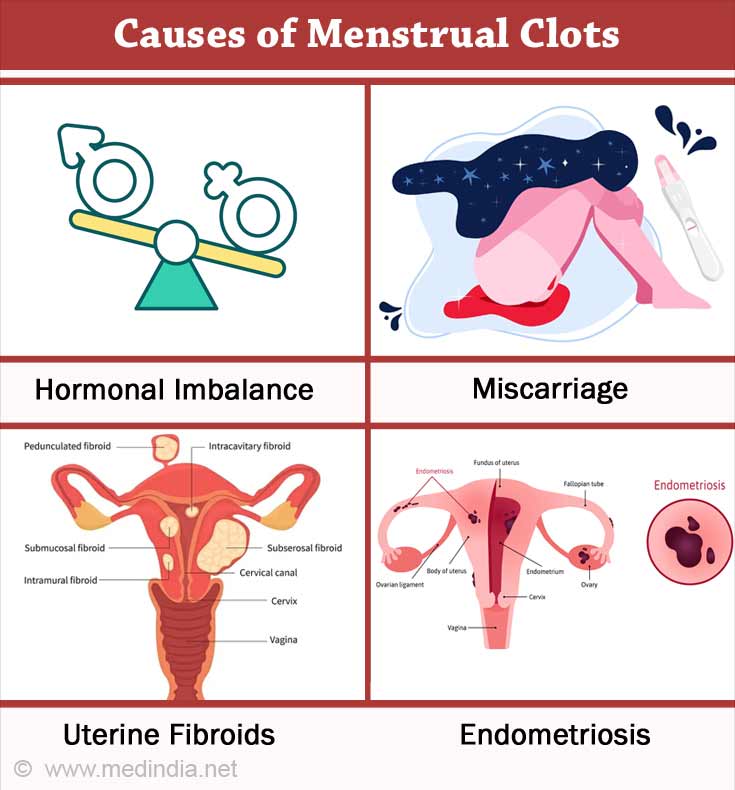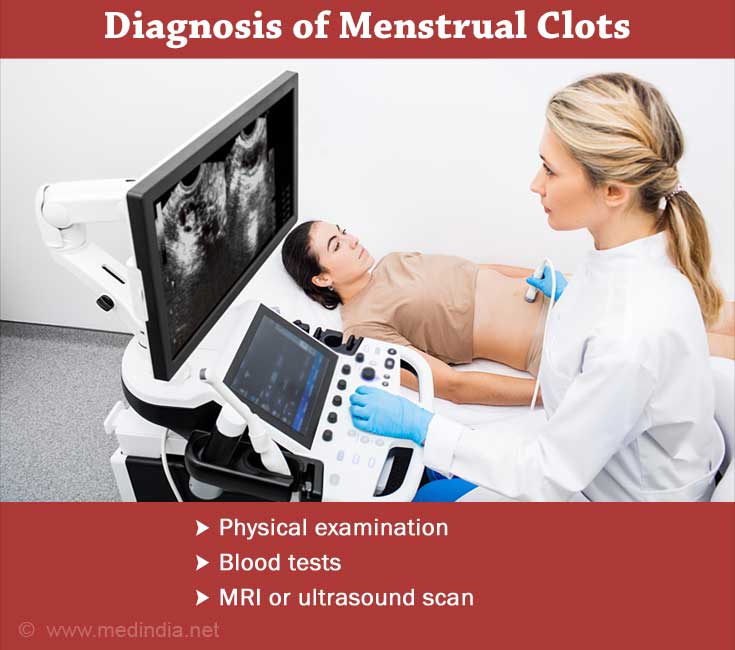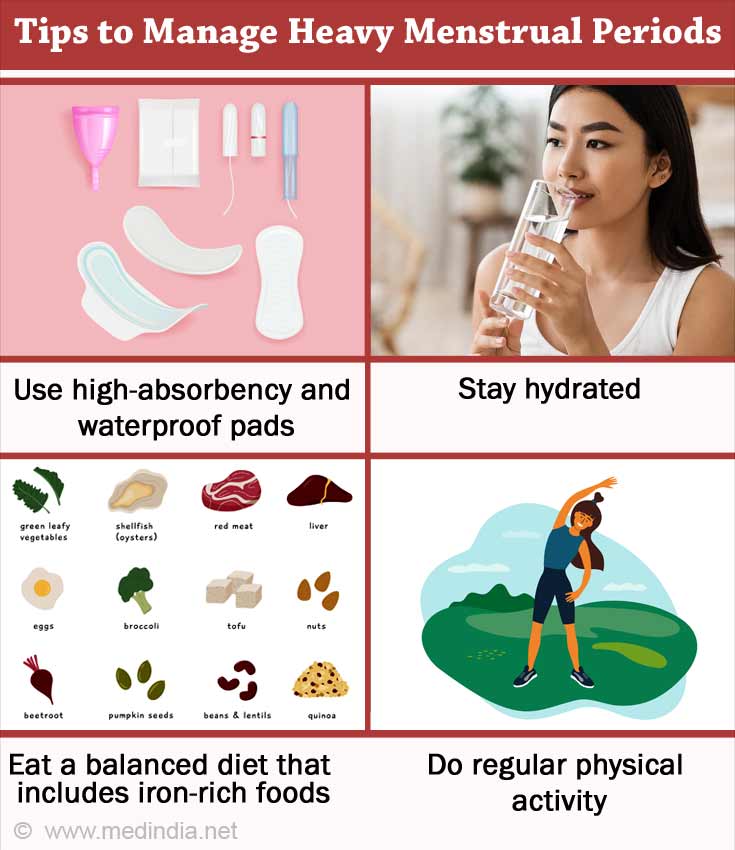- Heavy Menstrual Bleeding - (https://www.cdc.gov/ncbddd/blooddisorders/women/menorrhagia.html)
- Heavy periods - (https://www.nhs.uk/conditions/heavy-periods/)
- Michigan Medicine - (https://www.uofmhealth.org/health-library/abo490)
Most women will notice blood clots during menstruation at some point in their lives. Occasional clots in period blood are normal but other conditions cause abnormal large blood clots.
Menstrual Clots
Menstrual clots are gel-like blobs of coagulated blood, and tissue that are expelled from the uterus during menstruation. They resemble stewed strawberries, or the clumps of fruit seen in jam, and may vary in color from bright to dark red.
Blood clots are a natural part of the body’s defense mechanism when an injury to the tissue, such as a cut or laceration occurs. In the same way, a menstrual clot helps prevent too much blood from escaping.
Normal vs. Abnormal Clots
Menstrual blood clots are not like clots formed in blood vessels. If the menstrual clots are small and only seen occasionally, they are usually normal.
Whereas regularly noticing clots larger than a quarter in size during a period or having heavy menstrual bleeding can signal a medical condition that needs investigation.
How Menstrual Clots Form?
Menstrual bleeding starts when hormones trigger the body to shed the lining of the uterus (endometrium). As the lining sheds, small blood vessels bleed.
To prevent too much blood from being lost, the body forms blood clots using a combination of plasma (the liquid part of the blood) and platelets (tiny blood cells that bind together to form clots) along with uterine lining tissue in menstrual bleeding.
This blood clot formation is common during heavy blood flow days because a larger amount of blood is sitting in the uterus. Heavy flow days usually occur at the beginning of a period and are short-lived.
Periods may also end with bright red blood clots. This means the blood is flowing quickly and doesn't have time to darken.
To pass larger blood clots, the cervix has to dilate a bit, causing pain that can be quite intense. This explains why we experience cramping during heavy flow period days.
Causes of Menstrual Clots
Physical and hormonal factors can impact the menstrual cycle and create a heavy flow. Heavy menstrual flow increases the chances of developing menstrual clots.
Heavy menstrual bleeding and bleeding that lasts more than seven days is referred to as menorrhagia. Menstrual bleeding is considered heavy if a tampon or menstrual pad is changed every two hours or less, for several hours with significant pain.
The following conditions may cause abnormal menstrual clots:

Uterine Obstructions
Conditions that enlarge or obstruct the uterus can put extra pressure on the uterine wall. That can increase menstrual bleeding, and clots. They also interfere with the uterus’s ability to contract.
Uterine polyps or fibroids - A blockage in the uterus that occur because of growths in the uterus. These include uterine polyps and fibroids, which are not cancerous but can cause other health issues without proper management.
The blockage can stop the proper contraction of the uterus, which results in more blood pooling. Then, they coagulate inside the uterine wall and form blood clots that are later expelled.
They can cause symptoms such as:
- Persistent lower back pain
- Pain during sex
- Feeling bloated
- Fertility issues
- Irregular periods
Endometriosis - A condition that causes the tissues of the uterine lining to grow outside of the uterus and into the reproductive tract. Although heredity, hormones, and previous pelvic surgery are thought to play a role, the exact cause is not known.
This abnormality can lead to several symptoms around the time of menstruation that include:
- Painful, crampy periods (dysmenorrhea)
- Very heavy periods (menorrhagia)
- Discomfort or pain during sex
- Fertility issues
- Lower back pain
- Nausea, vomiting, and diarrhea around the time of your period
Adenomyosis - This condition occurs when the uterine lining grows into the muscular wall of the uterus. This can make the uterus grow two to three times its normal size, which in turn leads to a heavier blood flow during a period.
Cancer - Although rare, cancerous tumors of the uterus and cervix can also lead to heavy menstrual bleeding.
Hormonal Imbalance
The balance of estrogen and progesterone hormones in the body is essential for maintaining a healthy uterus. If the levels of specific hormones become unbalanced, heavy menstrual bleeding, or clotting can occur.
Some conditions that can cause a hormonal imbalance are hypothyroidism,
The main symptom of a hormonal imbalance is an irregular menstrual cycle.
Pregnancy Loss
During a miscarriage or pregnancy loss, large blood clots are expelled depending on the stage of the pregnancy.
Pregnancy loss can sometimes occur before a person knows that they are pregnant, so they may mistake an early miscarriage for a regular menstrual cycle.
If large blood clots are seen during pregnancy, it is a sign of a miscarriage or a potentially life-threatening ectopic pregnancy, in which the fetus has implanted outside of the uterus.
Bleeding Disorders
Some bleeding disorders may be responsible for heavy menstrual flow, as they can affect the coagulation proteins that the uterine lining needs to stop menstrual bleeding.
Platelet function disorders such as von Willebrand’s disease (VWD) can also cause chronic heavy menstruation.
Complications of Menstrual Clots
One of the major complications of heavy menstrual bleeding is iron deficiency anemia. Anemia is a condition that occurs when there is not enough iron in the blood to make healthy red blood cells.
Symptoms include fatigue, weakness, paleness, shortness of breath, and chest pain.
Doctors may advise taking an iron supplement if someone is losing too much blood or may be at risk of anemia.
Diagnosis of Menstrual Clots
To diagnose the cause of abnormal menstrual clots, a doctor may ask about signs and symptoms, and they will carry out a physical examination.

Additionally, they will order blood tests to look for hormonal imbalances or imaging tests such as MRI or ultrasound to check for fibroids, endometriosis, or other obstructions in the uterus.
Finding out the cause will allow a doctor to recommend the most appropriate course of treatment.
Treatment for Menstrual Clots
Controlling heavy menstrual bleeding is the best way to control menstrual clots.
Medications
- Hormonal medications balance the hormones and control heavy bleeding.
- Intrauterine devices (IUDs) containing progestin and some birth control pills may reduce the menstrual blood flow.
- Hormonal contraceptives also can be beneficial in slowing the growth of fibroids and other uterine adhesions.
- For women who prefer not to use hormone treatments, a common option is a medication tranexamic acid (Cyklokapron, Lysteda), which affects blood clotting.
- Taking nonsteroidal anti-inflammatory drugs (NSAIDs) during the period to help reduce symptoms, such as cramping, pain, and discomfort. The NSAIDs may also help with excessive bleeding.
Surgery
A dilation and curettage (D and C) – A procedure that follows a miscarriage or childbirth can be used to determine the underlying cause for heavy menstrual bleeding or as a treatment for various conditions.
D and C involve widening the cervix and scraping the uterine lining. It’s usually done in an outpatient setting under sedation.
For women with uterine growths like fibroids that don’t respond well to medication, surgery to remove the growths may be necessary. The type of surgery will depend on the size and location of the growth.
Operative hysteroscopy - This can be used to remove fibroids or the uterine lining.
Endometrial ablation or resection - These procedures remove or destroy all or part of the uterine lining to lessen or stop periods.
Laparoscopy - This is a minimally invasive surgery that can be used to remove small uterine fibroids and growths with a small surgical incision in the abdomen.
Myomectomy - If fibroids are large, myomectomy is done with a larger incision in the abdomen.
Hysterectomy - In this surgery uterus is removed, which means periods won’t occur anymore. This option is considered when medications haven't helped and/or if a person is a long way from menopause.
Tips to Manage Heavy Menstrual Periods

- Use high-absorbency tampons and pads that can catch the blood flow and clots.
- Use a waterproof pad or even a towel placed on top of sheets at night.
- Wear dark-colored clothing to conceal any leaks.
- Always carry period supplies with you.
- Stayhydrated
- Avoid aspirin, which may make bleeding worse.
- Eata balanced diet that includes iron-rich foods.
- Do regular physical activity.
- Keep track of period changes in a journal or a smartphone app.
Sometimes heavy menstrual bleeding is simply a heavy flow. Other times, it is a symptom of another underlying condition.
In general, blood clots aren't something to worry about. But if you are concerned about painful cramps or other symptoms associated with periods, go ahead and schedule a visit with your healthcare provider or gynecologist.







